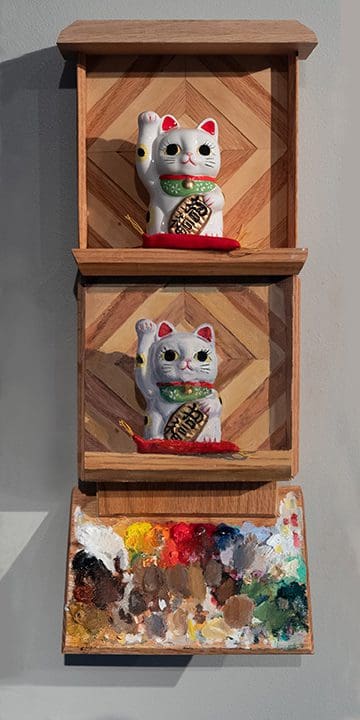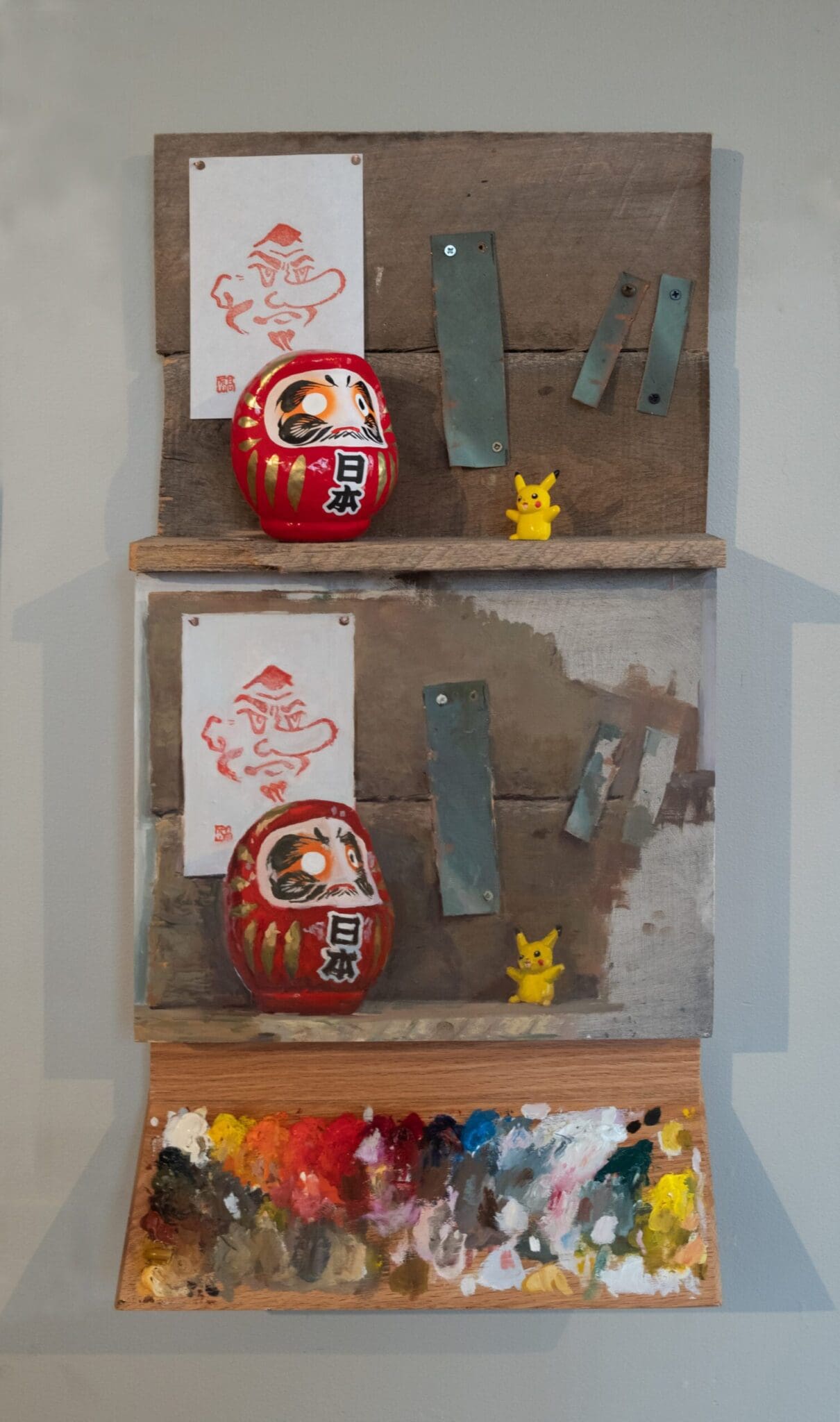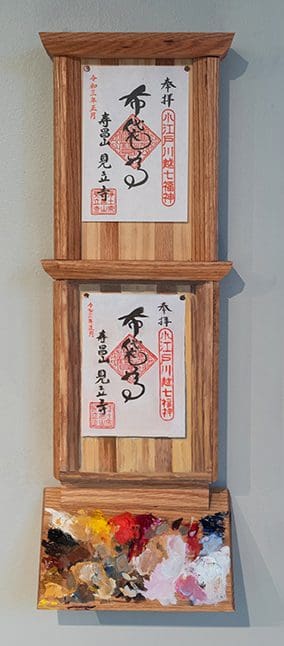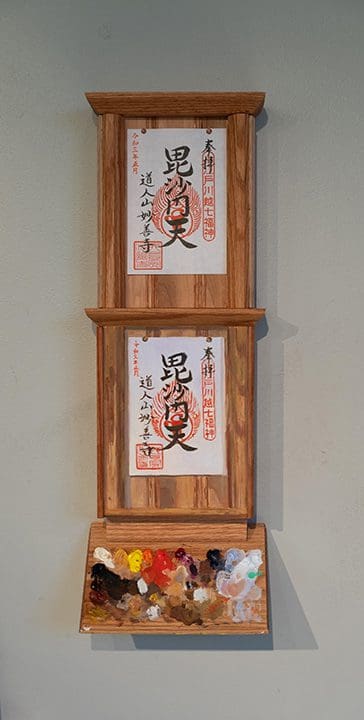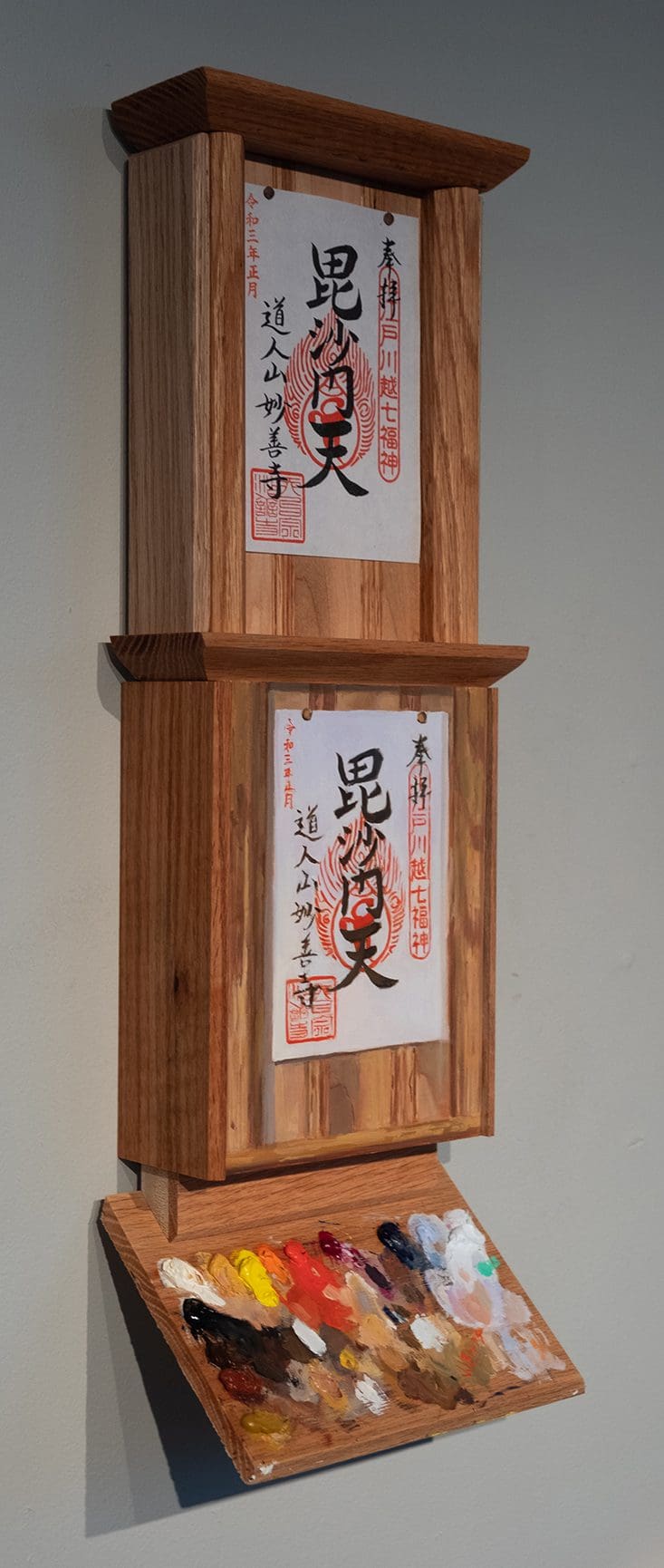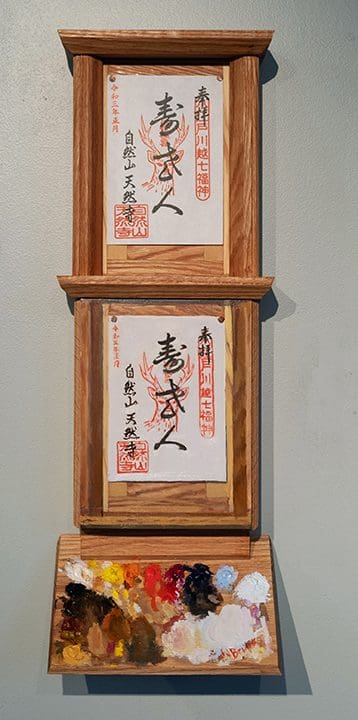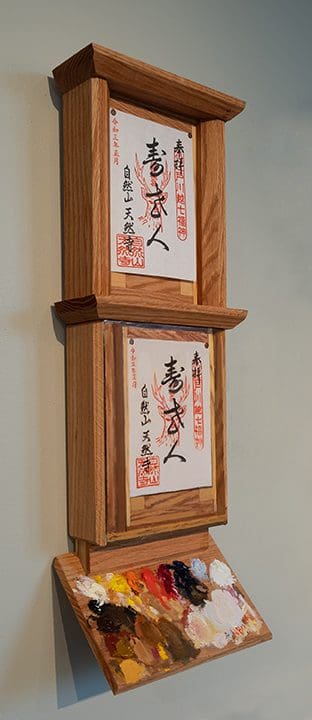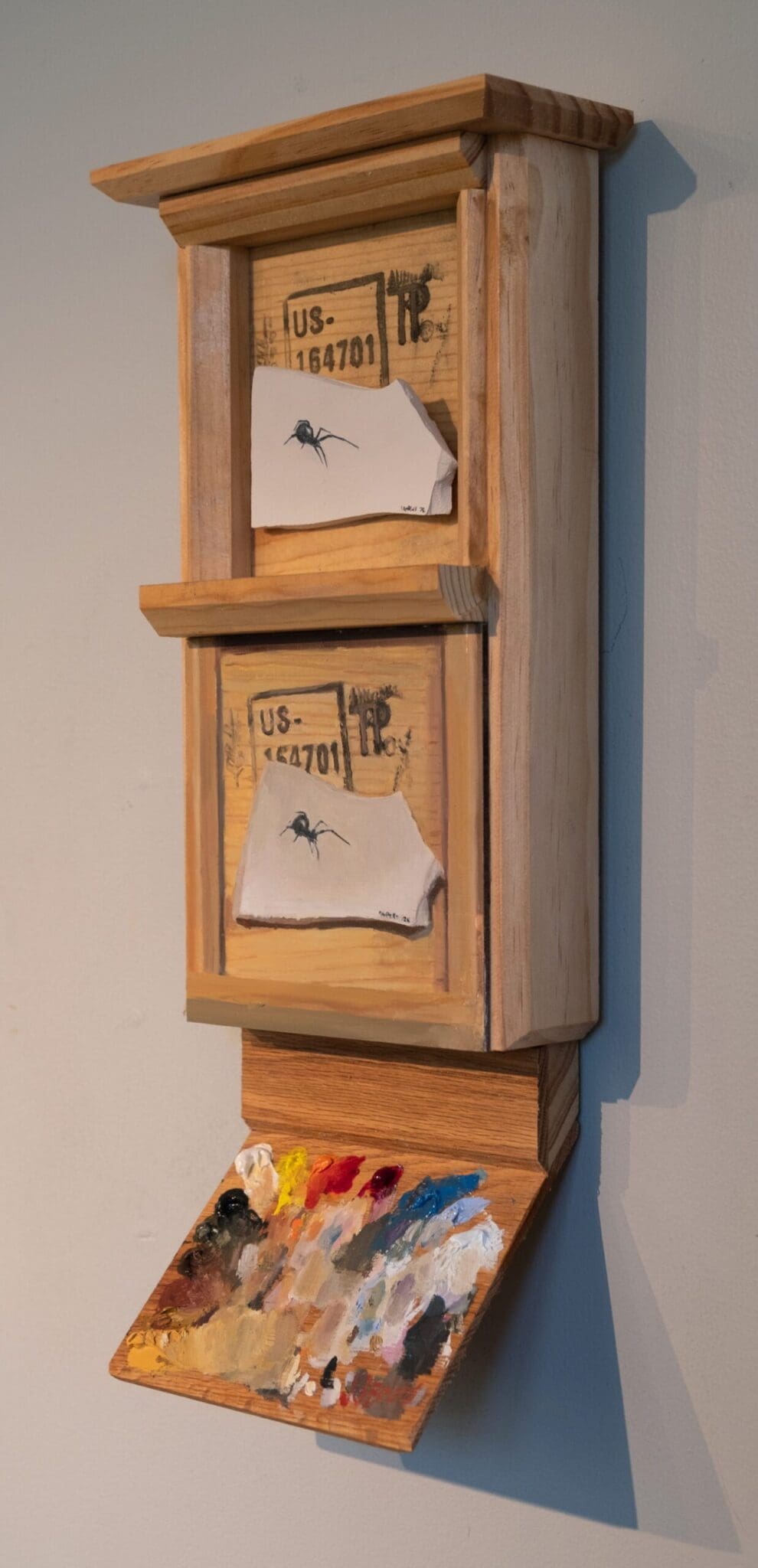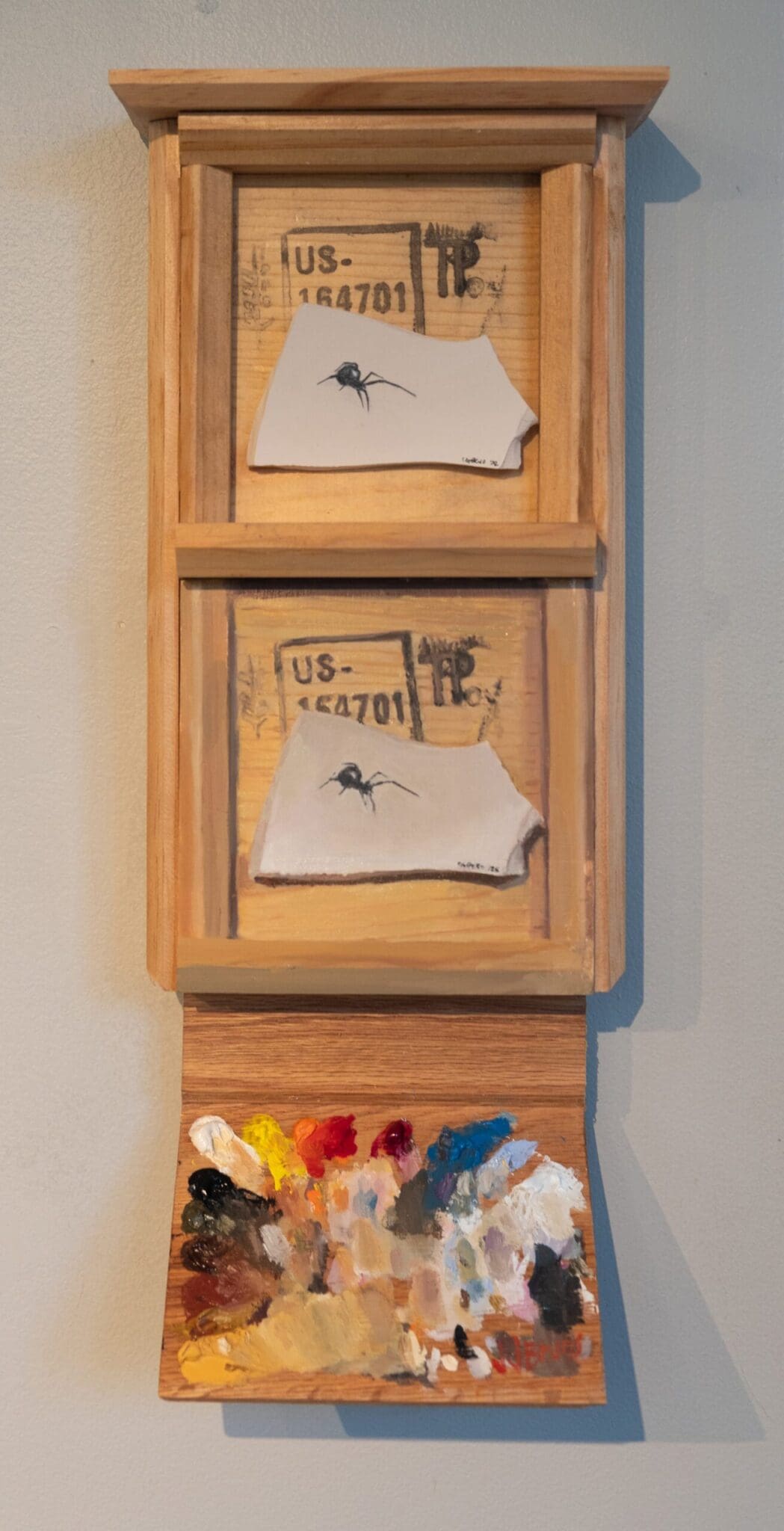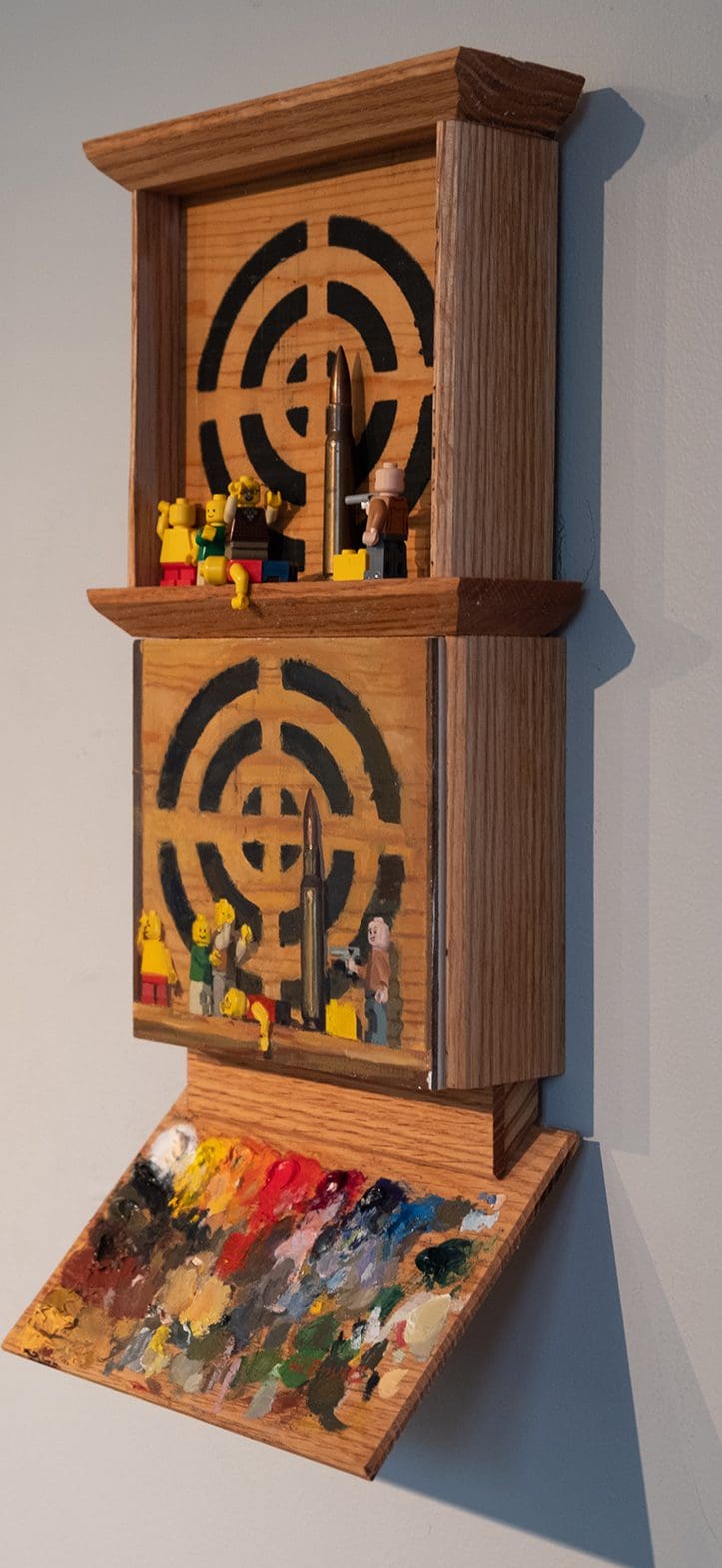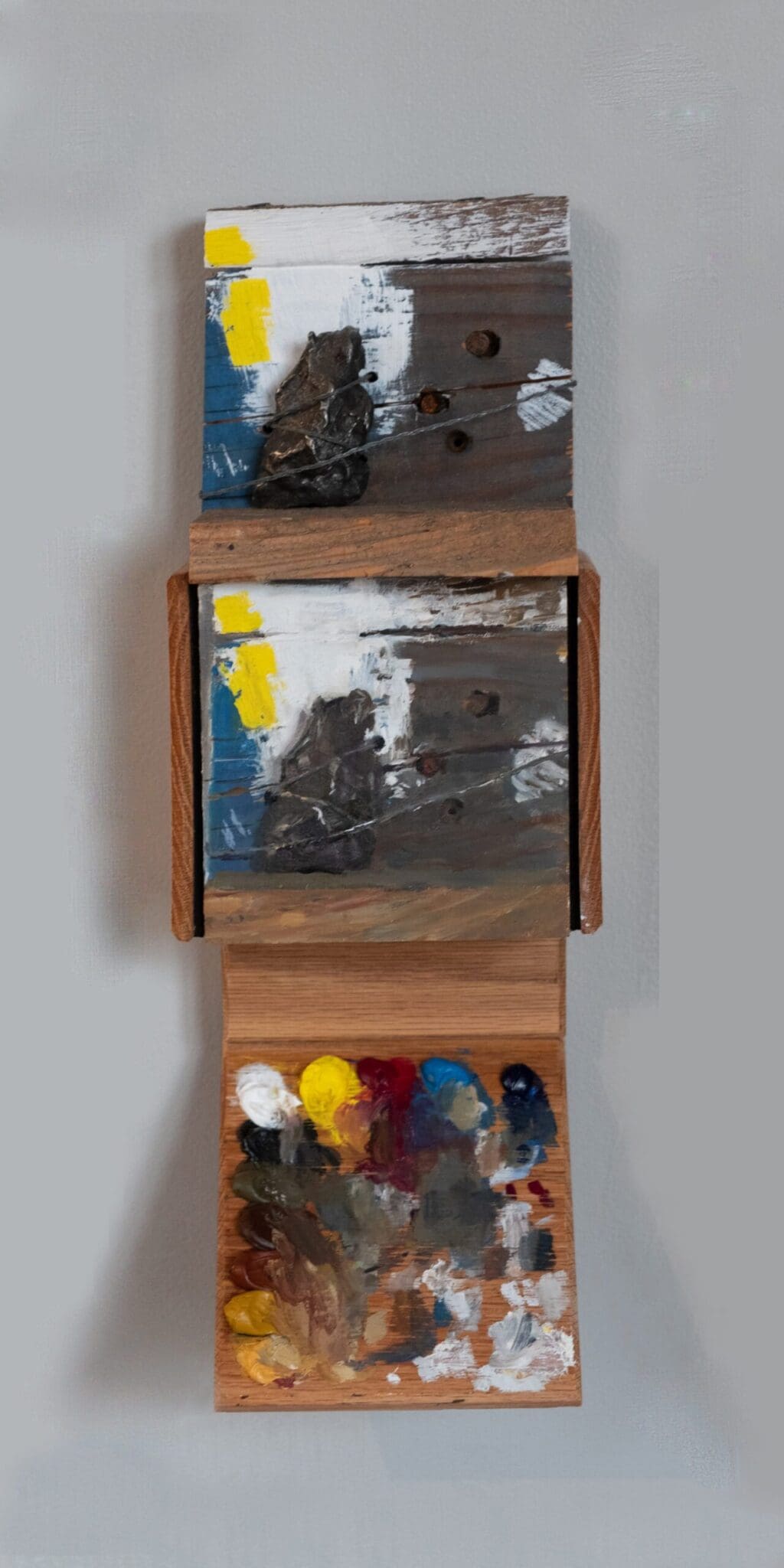During my time in Japan (2018-2021), the constraints of space and current concerns about cultural appropriation led me to shift from abstract to representational work. I grappled with the fear of appropriating imagery from a culture I wasn’t born into, resulting in assemblages about plagiarism and appropriation.
In this body of work, each painting is the centerpiece of an assemblage construction. Executed on a 2-3” thick panel, the paintings incorporate found objects permanently secured to the surface, creating a shrine-inspired display. The attached palette serves as a tool for disciplined observation, symbolizing the appropriation of the subject matter and providing proof of the artist’s work.

